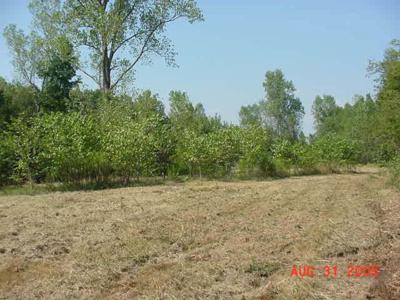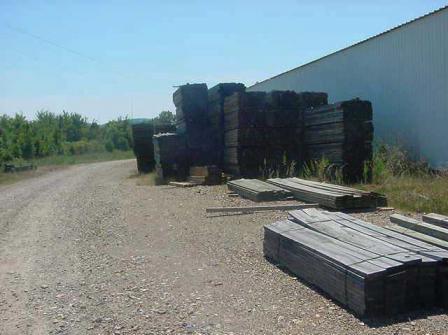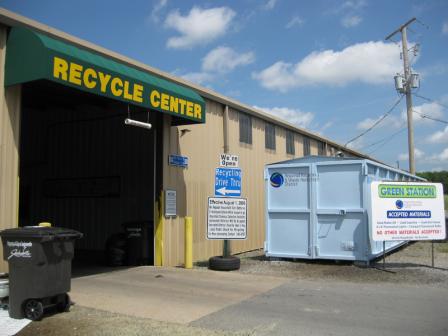Superfund Sites in Reuse in Arkansas
If you are having trouble viewing the map in your browser, click the 'View larger map' link below
Jacksonville Municipal Landfill
 Jacksonville Municipal LandfillThe Jacksonville Municipal Landfill Superfund site encompasses less than five acres of a 40-acre landfill outside of Jacksonville, Arkansas. The City of Jacksonville operated a municipal landfill on the site from 1960 until 1973. Operators closed the landfill when the Arkansas Department of Pollution Control and Ecology, now the Arkansas Department of Environmental Quality, refused to grant a landfill permit due to the high water table and poor drainage. In 1986, the City of Jacksonville fenced the site to prevent public access. In 1987, EPA added the site to the Superfund program’s National Priorities List (NPL). The cleanup plan included removal of contaminated material, capping of on-site waste, water monitoring and maintenance. Land use controls keep residents from disturbing the cap in the excavated areas and from using the on-site groundwater. EPA deleted the site from the NPL in 2000. The City of Jacksonville continues to restrict access to the site and ensure the cleanup remains effective. Today, hunters use the site for recreational purposes.
Jacksonville Municipal LandfillThe Jacksonville Municipal Landfill Superfund site encompasses less than five acres of a 40-acre landfill outside of Jacksonville, Arkansas. The City of Jacksonville operated a municipal landfill on the site from 1960 until 1973. Operators closed the landfill when the Arkansas Department of Pollution Control and Ecology, now the Arkansas Department of Environmental Quality, refused to grant a landfill permit due to the high water table and poor drainage. In 1986, the City of Jacksonville fenced the site to prevent public access. In 1987, EPA added the site to the Superfund program’s National Priorities List (NPL). The cleanup plan included removal of contaminated material, capping of on-site waste, water monitoring and maintenance. Land use controls keep residents from disturbing the cap in the excavated areas and from using the on-site groundwater. EPA deleted the site from the NPL in 2000. The City of Jacksonville continues to restrict access to the site and ensure the cleanup remains effective. Today, hunters use the site for recreational purposes.
For more information:
Mid-South Wood Products
 Mid-South Wood ProductsThe 57-acre Mid-South Wood Products Superfund site is located in Mena, Arkansas. Past site activities included sawmill and wood-preserving operations. Site operators improperly handled and disposed of preservatives on site during wood-treating and milling operations. Investigations triggered by a 1976 fish kill downstream from the site found that site activities resulted in the contamination of groundwater, surface water and sediment. Contaminants included pentachlorophenol (PCP), arsenic and chromium. In 1983, EPA placed the site on the Superfund program’s National Priorities List (NPL). Cleanup activities included the digging up, consolidation and capping of contaminated soil in an on-site landfill. It also included installation of a groundwater recovery and treatment system and groundwater monitoring. Fencing and land use controls restrict use of the property. Cleanup activities began in 1988 and ended in 1989. Wood-treating operations stopped in 1990. A new owner has since purchased the property and currently uses the site to store roofing materials.
Mid-South Wood ProductsThe 57-acre Mid-South Wood Products Superfund site is located in Mena, Arkansas. Past site activities included sawmill and wood-preserving operations. Site operators improperly handled and disposed of preservatives on site during wood-treating and milling operations. Investigations triggered by a 1976 fish kill downstream from the site found that site activities resulted in the contamination of groundwater, surface water and sediment. Contaminants included pentachlorophenol (PCP), arsenic and chromium. In 1983, EPA placed the site on the Superfund program’s National Priorities List (NPL). Cleanup activities included the digging up, consolidation and capping of contaminated soil in an on-site landfill. It also included installation of a groundwater recovery and treatment system and groundwater monitoring. Fencing and land use controls restrict use of the property. Cleanup activities began in 1988 and ended in 1989. Wood-treating operations stopped in 1990. A new owner has since purchased the property and currently uses the site to store roofing materials.
For more information:
Mountain Pine Pressure Treating
The 95-acre Mountain Pine Pressure Treating Superfund site is located in Plainview, Arkansas. The site area contains three wood pressure-treating facilities that operated from 1962 until 1986. Wood-treating processes led to soil contamination. EPA added the site to the Superfund program’s National Priorities List (NPL) in July 1999. EPA’s cleanup included addressing and capping sludge on site and treating soil on site. EPA awarded the Town of Plainview a Superfund Redevelopment Initiative grant in 2001 to assist in developing potential reuse options for the site. The Town of Plainview developed a Land Use Development Plan. This Plan assisted EPA in selecting cleanup that supported the town's reuse plans. In 2004, an on-site groundbreaking ceremony commemorated the beginning of construction for a steel plant. This event marked the site’s return to productive industrial reuse. Though the steel company has gone out of business, a mulch company, Mulch and More, now occupies the site and employs about 10 people.
For more information:
Vertac, Inc.
 Vertac, Inc.The 193-acre Vertac, Inc. Superfund site is located 15 miles northeast of Little Rock in Jacksonville, Arkansas. The federal government built the first industrial facilities at the site during the 1930s and 1940s. Decades of improper waste disposal led to soil and groundwater contamination. Following initial environmental investigations, EPA placed the site on the Superfund program’s National Priorities List (NPL) in 1983. Cleanup addressed contaminated debris, soil and waste in drums. The southern portion of the site is fenced and restricted. This portion of the site includes the landfill, the wastewater treatment facility and the groundwater treatment system. The City of Jacksonville recognized early on that the site’s current infrastructure could serve as the foundation for reuse. Following surface cleanup activities, the City acquired the northern part of the site property in 2000. An EPA Superfund Redevelopment Initiative pilot grant enabled the City to evaluate several reuse options. Today, site reuses include a recycling center, office space and storage for the City’s Street Department, a fire department training facility, a driver training pad, a recycling education park, police firing range and a public safety building. The City’s new recycling center serves 10,000 residents. It recycles 1.5 million pounds of materials each year. By diverting these materials from a landfill, the recycling center saves the City an estimated $50,000 annually. The Federal Highway Administration awarded Jacksonville a $100,000 Sidewalk Grant for improvements in one area of the site. Plans include a community green space with sidewalks and picnic tables.
Vertac, Inc.The 193-acre Vertac, Inc. Superfund site is located 15 miles northeast of Little Rock in Jacksonville, Arkansas. The federal government built the first industrial facilities at the site during the 1930s and 1940s. Decades of improper waste disposal led to soil and groundwater contamination. Following initial environmental investigations, EPA placed the site on the Superfund program’s National Priorities List (NPL) in 1983. Cleanup addressed contaminated debris, soil and waste in drums. The southern portion of the site is fenced and restricted. This portion of the site includes the landfill, the wastewater treatment facility and the groundwater treatment system. The City of Jacksonville recognized early on that the site’s current infrastructure could serve as the foundation for reuse. Following surface cleanup activities, the City acquired the northern part of the site property in 2000. An EPA Superfund Redevelopment Initiative pilot grant enabled the City to evaluate several reuse options. Today, site reuses include a recycling center, office space and storage for the City’s Street Department, a fire department training facility, a driver training pad, a recycling education park, police firing range and a public safety building. The City’s new recycling center serves 10,000 residents. It recycles 1.5 million pounds of materials each year. By diverting these materials from a landfill, the recycling center saves the City an estimated $50,000 annually. The Federal Highway Administration awarded Jacksonville a $100,000 Sidewalk Grant for improvements in one area of the site. Plans include a community green space with sidewalks and picnic tables.
For more information:
